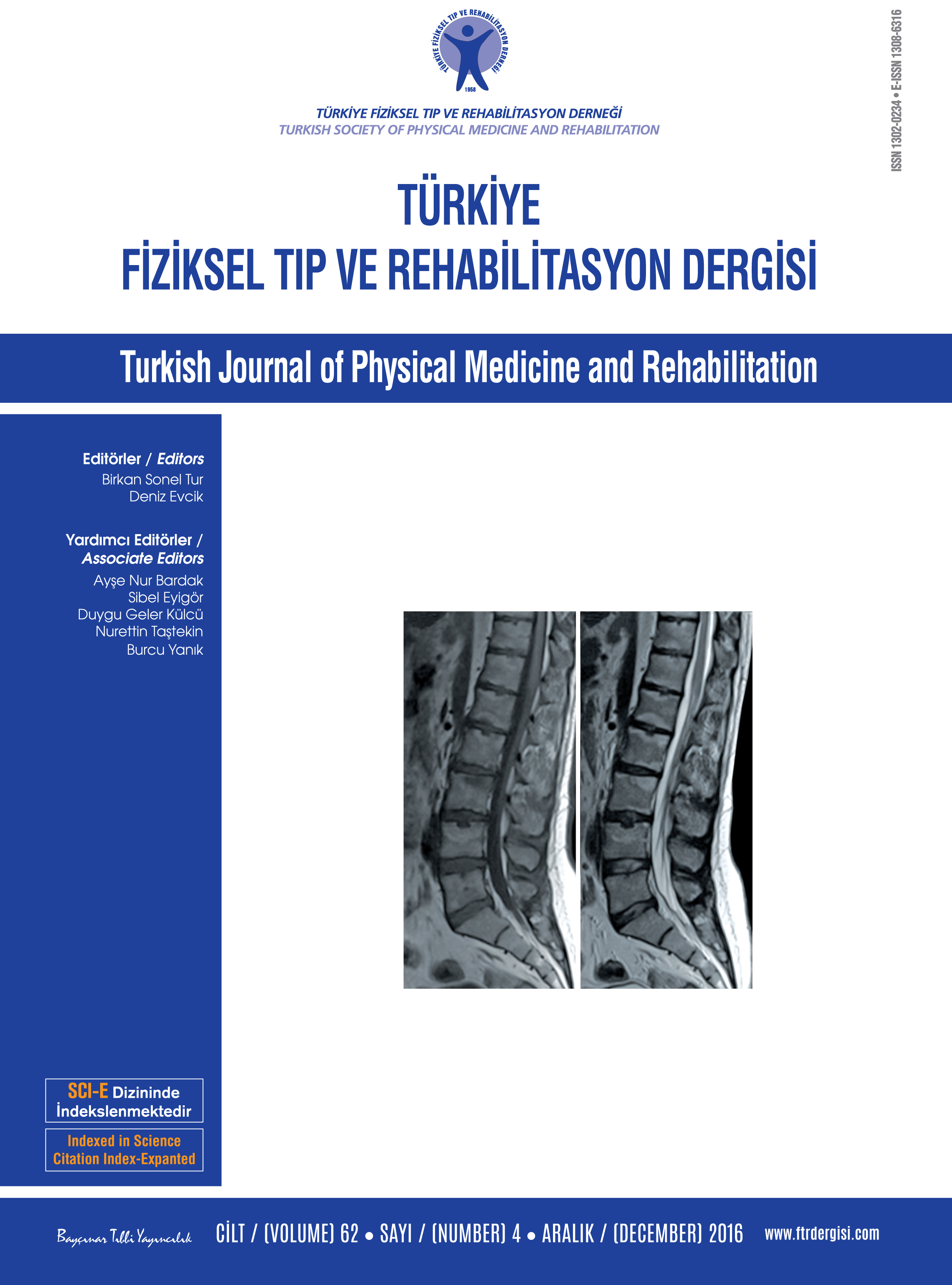Investigation of neuroprotective effects of topiramate as an antiepileptic agent in experimental spinal cord injury model
2 Baypark Hastanesi, Beyin Cerrahisi Bölümü, İstanbul, Türkiye
3 Haydarpaşa Sultan Abdülhamid Eğitim ve Araştırma Hastanesi Beyin Cerrahisi Kliniği, İstanbul, Türkiye
4 Düzce Üniversitesi Tıp Fakültesi, Beyin Cerrahisi Kliniği, Düzce, Türkiye
5 Haydarpaşa Sultan Abdülhamid Eğitim ve Araştırma Hastanesi Patoloji Servisi, İstanbul, Türkiye
6 Haydarpaşa Sultan Abdülhamid Eğitim ve Araştırma Hastanesi Biokimya Servisi, İstanbul, Türkiye DOI : 10.5606/tftrd.2016.67760 Objectives: This study aims to research neuroprotective effects of topiramate that has antioxidant effects in spinal cord injury in rats.
Materials and methods: We performed the study with 40 male Wistar albino rats. We divided the rats in five groups in terms of performed procedures. Group 1 (n=8); laminectomy was performed, trauma was not created, treatment was not given. Group 2 (n=8); laminectomy was performed, trauma was created, treatment was not given. Group 3 (n=8); laminectomy was performed, trauma created, saline (30 mg/kg) was given. Group 4 (no=8); laminectomy was performed, trauma was created, methylprednisolone (30 mg/kg) was given. Group 5 (n=8); laminectomy was performed, trauma was created, topiramate (30 mg/kg) was given. The trauma was created through clipping the spinal cord by Yaşargil aneurysm clip (Aesculap FE 721 K). Motor functions were evaluated by using the inclined plane test on the first day after injury. Malondialdehyde (MDA), catalase (CAT), glutathione peroxidase (GPx) and superoxide dismutase (SOD) levels in the spinal cord tissue samples taken, were measured by ELISA method.
Results: We found statistically significant difference for high levels of MDA between group 1 and groups 4 and 5 (p=0.013). There was no statistically significant difference in terms of SOD level between group 4 and group 5 (p=0.80). There was no statistically significant difference for GPx levels between group 4 and group 5 (p=0.51). There was no statistically significant difference for CAT levels between group 4 and group 5 (p=0.38). Results of group 4 and group 5 had the best value among the treatment groups in motor activity examination by inclined plane test. We observed minimal edema and near-normal gray and white matter findings in the posttraumatic sections of group 4 and group 5 in the histopathological examination.
Conclusion: We think that topiramate has a neuroprotective effect that can be used in the treatment of acute spinal cord injury in rats, based on biochemical markers, histological examination and motor function assessment data, but there is the need for further studies on this matter.
Keywords : Neuroprotective effect; spinal cord trauma; topiramate

















